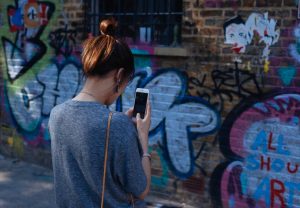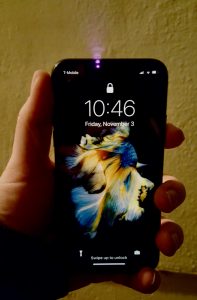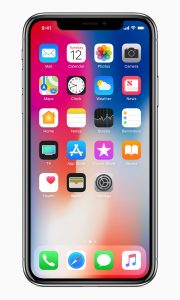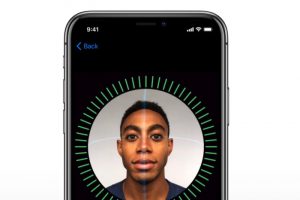On November 3rd 2017 the much-anticipated Apple’s iPhone X finally hits the market. Unlike other products from Apple, the newly launched iPhone X comes with a more advanced security system called ‘Face ID’. Like the Fingerprint security authentication that comes with older version of Apples iPhone products, Face ID is used for the verification and authentication of users true Identity.
Apple’s face ID uses similar biometric technology used in Touch ID. One of the major differences here is that Face ID tries to authenticate your identity by scanning through your face and retina. Face ID technology uses your device’s TrueDepth selfie camera to scan through your entire face and it compares the newly taken picture with the previous picture which was initially captured while setting up your Face ID. If there is a match, your device gets automatically unlocked.
How does this technology work?
Now let’s get a bit technical, here is how face ID technology works. Anytime you raise or tap the screen of your device, your device TrueDepth camera is automatically activated for a scan of your face. After the scan, a 2D infrared image of your face will be formed by the camera through its 300,000 plus infrared dots projected by the camera to your face.
Afterwards, a sequence of digitally signed 2D depths and images captured by the TrueDepth camera will subsequently be sent to your iPhones X secured enclave memory chip called the Bionic chip. The data stored in the Bionic chip is then transformed into mathematical representations by your device. These mathematical representations are then compared with your stored facial data which were initially saved data while setting your iPhone X Face ID. If there is a match, your device automatically unlocks otherwise it remains locked.
What are the uses of Apple’s Face ID
There are not many differences between what the newly launched Face ID can do when compared with Touch/Fingerprint ID. They perform basically the same task, other than the later is more secured and advanced than the former. Below are some of the operations you can perform with your iPhone X Face ID
- Will be required for Identity authentication anytime you are to make transactions on Apple pay
- If activated it may also be used for user ID verification when you are to make a purchase from either of your device iTunes store or app store
- It may also be used by a third-party application on your device for identity This totally depends on whether the technology has been integrated with the application by the third-party app developers. It should, however, be noted that third-party applications will only have access to your live depth data, but not your raw data.
How to set up Apple’s iPhone X Face ID
Just like the touch ID technology that comes with older versions of iPhone, you will be required to go through an initial setup process while setting up your Face ID and here is how to go about doing that.
- Tap on settings icon from your device
- Tap Face and Passcode icon
- Tap enrol face icon
- Your device camera will automatically take a snapshot of your face and that will be followed by encircling of your captured image by a thick round green markings as shown in the figure below
- Afterwards, you will be immediately prompted to adjust your face so as align properly within the enclosed circle
- Boom! You are good to go.
Pros and cons of Apple’s iPhone X Face ID
For every invented technology, there is always good and bad points, but often the good always outweighs the bad. We have seen inventions from some of the world’s foremost tech giants such as Google and Microsoft revolutionized the way we live our lives. The same goes for the newly launched Apples face ID. Below are some of the pros and few drawbacks of this new technology.
Pros
- It is more advanced and secured than any other means of identity verification on any iPhone device. The chances of bypassing this security system is just one in a million
- Your captured data is stored on your device memory, not on cloud. This makes it difficult for hackers to tap into and make damages
- This technology can detect whether you’re a human or not through a scan of your eye. It’s a futile endeavour for any hacker trying to make a bypass with fake images.
- This technology is 20 times more accurate than Touch ID
- It can authenticate your through identity even when you are putting on a glasses or an hat
- It gives the flexibility to update your facial details as you age.
- After five unsuccessful attempts, a passcode will be required to unlock your device
- Face ID can be used both indoor and outdoor. It can also be used when there is total darkness.
Cons
- Can feel awkward and unnatural posing like you want to take a selfie anytime you are to unlock your device
- There is always a delay in execution as compared with Touch ID that authenticates in split seconds
- Only a face can be used per device, unlike Touch ID that gives the flexibility to register more than 5 users at a time.
- Face ID is cannot be used on any other device other than on an iPhone X
As mentioned above FaceID is currently available on the iPhone X only. Click here to view our accessories for the iPhone X. If you found this guide useful would you please leave us a comment below to let us know this was helpful. If there is a specific article or guide you’d like us to write please email us or leave a comment below.
Latest posts by Campad Electronics (see all)
- Apple Launches iPhone 16e - February 21, 2025
- Create a Wireless Charging Surface at Home for Less Than $50 - July 9, 2024
- Meet The Telstra 5G Hotspot - May 22, 2024

 Follow
Follow



